This post may contain affiliate links. As an Amazon Associate I earn from qualifying purchases.
* * *
While I’m on vacation this week, I’m delighted to share travel tips and stories from a different point of view. Today’s post is courtesy of my dad!
Travel blogs are inspired by new adventures shared by a travelling author, and a corresponding thirst for embracing new experiences by blog readers.
What if your adventure could take you millions of light years away? Wouldn’t that be a great experience? Of course we earthlings cannot travel beyond our planet yet, but there are those involved in the science of astronomy who travel to distant galaxies on a daily basis. Though these astronomers are planted on terra firma, they too, are satisfying their wanderlust to experience new places.
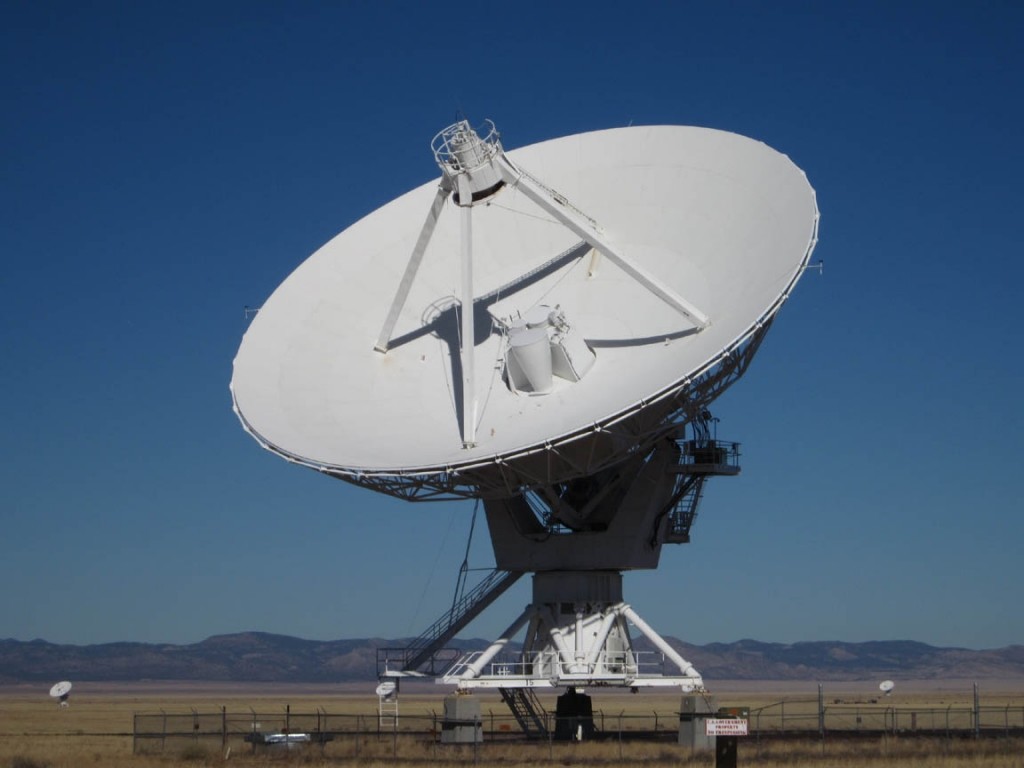
A trip to the National Radio Astronomy site “VLA”, which stands for Very Large Array, offers some mind expanding experiences of how mankind is probing the outer reaches of the universe via radio astronomy. It is about 50 miles west of Socorro, New Mexico.
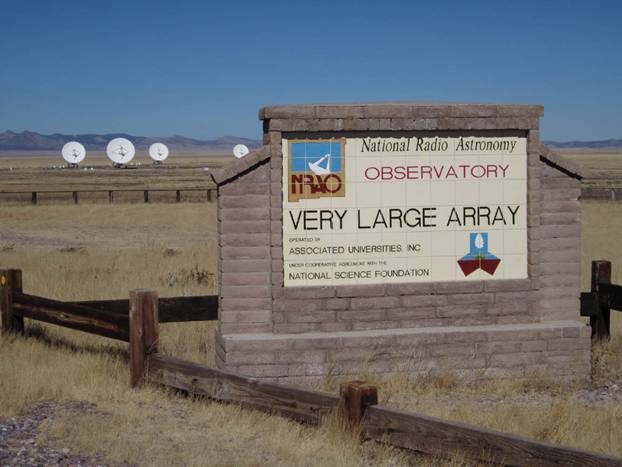
A traditional telescope amplifies the weak incoming light of distant stars and makes them visible. Distant galaxies and heavenly objects also emit electromagnetic energy besides light, of which radio waves are one part. By examining these radio waves from distant objects, additional information on their formation and make-up are possible. It does not have to be night time to receive radio waves, such that the telescope array is busy all day as well.
So what is cool about this VLA site to a traveler? The scenery is gorgeous! The VLA site was chosen on a 7500 ft. high plateau near the continental divide, surrounded by the distant mountain peaks that help isolate the telescopes from manmade radio interference. There was a herd of pronghorn not far from the observatory as well.
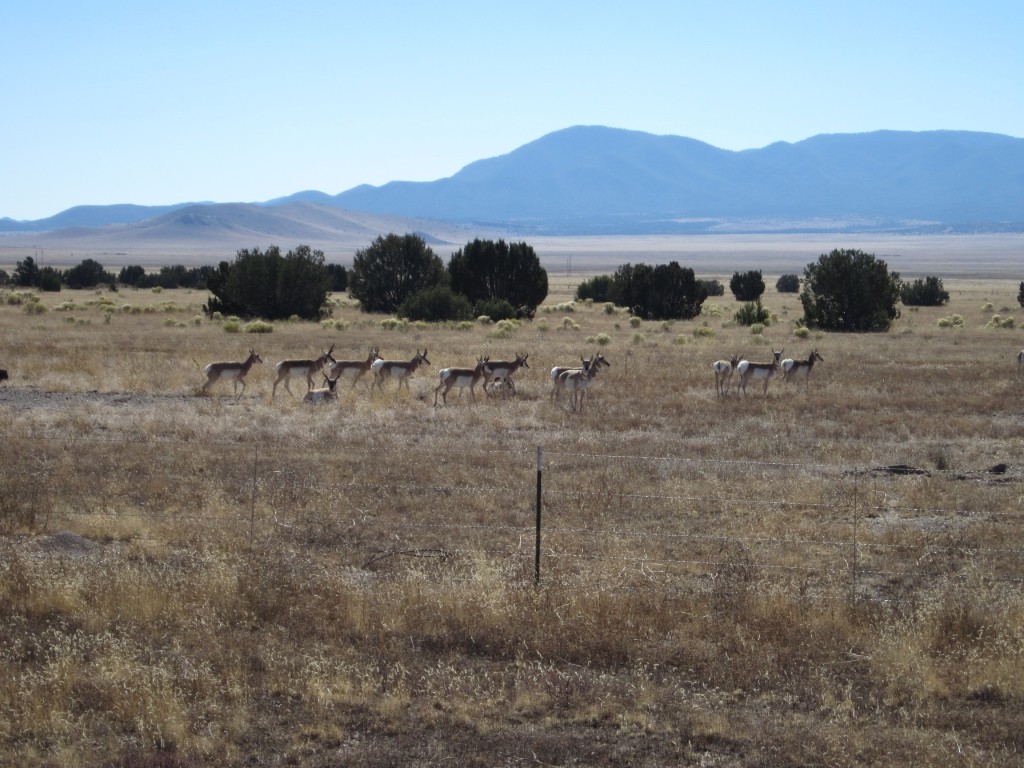
This is not one telescope, but a series of 27 antennas each measuring 81 feet in diameter, and each weighing over 200 tons. The visitor center does a splendid job of explaining how these individual telescopes operate in unison to act as one large telescope, all with free admission. They had an interesting video narrated by Jodie Foster to help explain how it all works for the non-scientists. Each telescope can be moved on miles of railroad tracks (over 22 miles from the center telescope) so that this collective array can “zoom” in on a distant object by being close together, or act broadly as if it were a wide angle lens by being far apart. Data collected from this array of telescopes is presented in a visual display that shows how various frequencies of radio waves provide different information on distant objects. There is a short path from the visitor center that allows you to see a single radio telescope close up, literally right underneath a behemoth structure that moves while tracking the distant stars. Just watching this multi-story, 200 ton, 81 foot diameter, object move while standing underneath it is impressive. One can only imagine the information that a remote astronomer is analyzing while the radio signals are being captured, much like he or she is watching a travelogue from light years away.
The closest food is in Magdalena, NM, where we ate at the Magdalena Café. We sampled the grilled roast beef sandwich, which came with a bowl of tortilla soup. Note the cowboy ketchup holders!
Finally, back toward Sorocco, NM, is the Bosque del Apache Wildlife Refuge. A large contingent of Sandhill Cranes migrate from up north to winter at this refuge. These birds are constantly “talking” to each other, and are quite large (4 to 5 feet tall with a 6 foot wingspan) which allow them to be seen from a substantial distance.
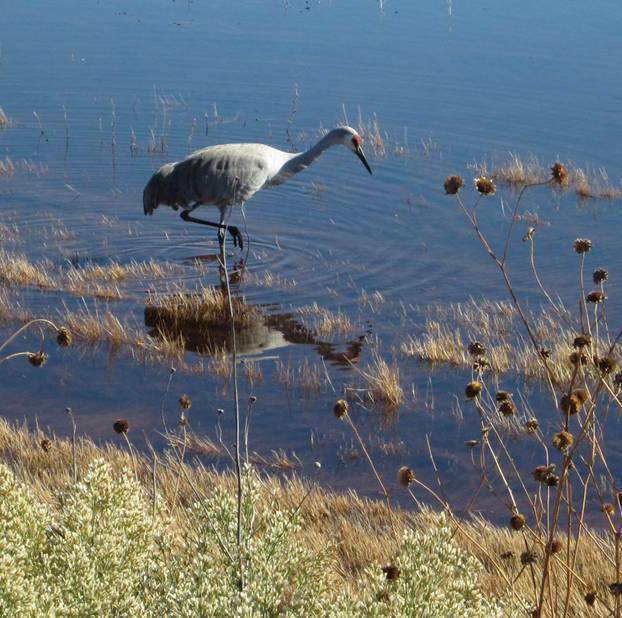
The refuge is not limited to cranes, but also dozens of other birds such as Snow Geese. Imagine the thrill of seeing an estimated 3 thousand geese in flight overhead, each making their unique honking sound.
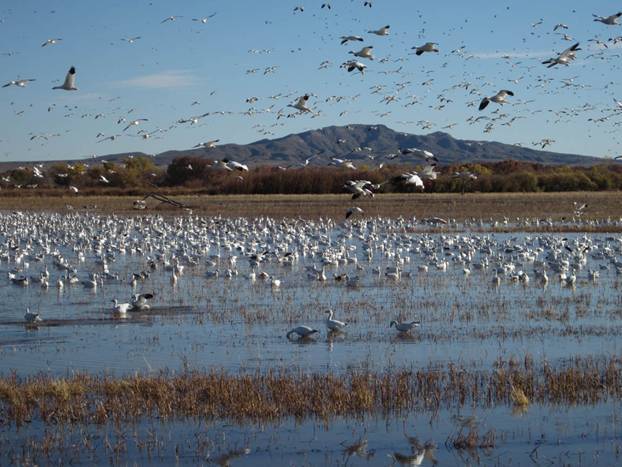
This travel loop consumes most of a day, but is truly a memorable experience. The mountain scenery beyond the travelogue borders is equally spectacular, so that you can’t go wrong in having a truly wonderful memory!
About the Guest Author: Bob is a new resident of New Mexico who is enjoying exploring this southwestern state. Favorite travel attractions include astronomical observatories, scenic train rides, and McDonalds around the world.

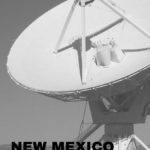
Great post Becky! And I thought it was really cute that it came from your dad while you’re away 🙂
@Beth, I’ll pass on your kind words to my dad!
I enjoyed both stories involving your father’s trip to Przemysl in Poland, as well as the one about Socorro New Mexico and the Bosque del Apache. Look it up but did you know that Poland today is about the same size as New Mexico?
@Wojciech, I passed your kind words onto my father. Thanks for sharing the fun trivia!